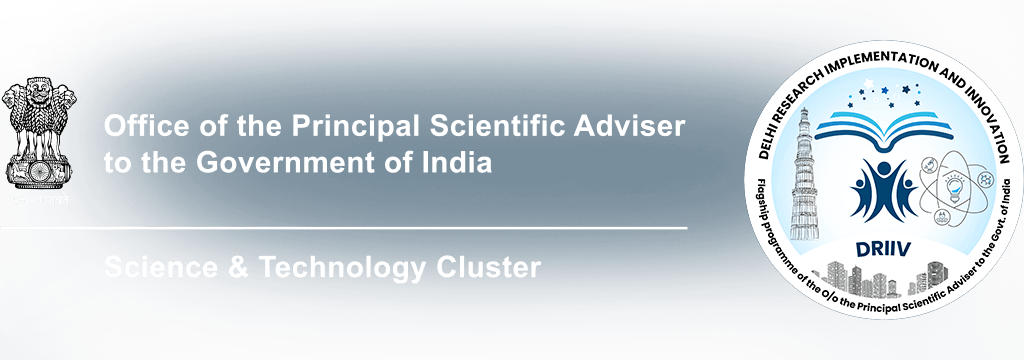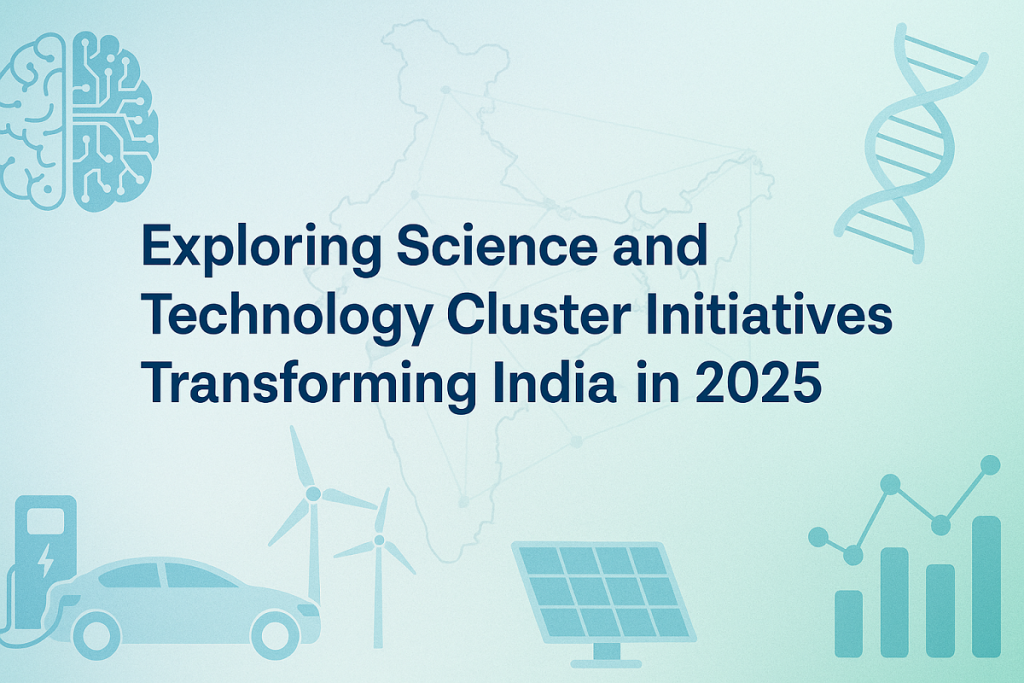In today’s fast-changing world, innovation is the key to progress. Countries that focus on research, development, and technology become global leaders. One of the best ways to promote innovation is through Science and Technology Clusters (S&T Clusters). These are places where universities, industries, research labs, and startups work together to solve big problems, create new products, and support economic growth.
But which are the top Science and Technology Clusters in the world? Let’s explore the top 5 global leaders and understand what makes them special. We will also see how organizations like DRIIV are working to create similar S&T Clusters in India.
What is a Science and Technology Cluster?
A Science and Technology Cluster is a region where many scientific and technological institutions work closely together. These include:
- Universities
- Research institutes
- Startups
- Large industries
- Government agencies
By working in the same area and sharing knowledge, these organizations create innovation faster. S&T Clusters support collaboration, job creation, and the growth of a knowledge-based economy.
Why are Science and Technology Clusters Important?
Science and Technology Clusters:
- Boost innovation and research
- Attract global investments
- Provide high-tech jobs
- Improve the quality of life with better solutions
- Help countries become self-reliant and future-ready
Countries that invest in S&T Clusters become more competitive in areas like healthcare, clean energy, information technology, agriculture, and more.
Top 5 Science and Technology Clusters in the World
Let’s take a look at the world’s leading Science and Technology Clusters that are shaping the future:
1. Silicon Valley, USA
Location: California, USA
Famous for: Technology innovation, startups, and venture capital
Why it’s a top S&T Cluster:
- Home to companies like Google, Apple, Facebook, and Intel
- Strong research institutions like Stanford University and UC Berkeley
- Billions of dollars in startup funding and venture capital
- A culture of entrepreneurship and innovation
Key Focus Areas:
Artificial Intelligence, Software, Clean Energy, Semiconductors, Biotech
2. Shenzhen-Hong Kong-Guangzhou Cluster, China
Location: Guangdong Province, China
Famous for: Hardware manufacturing, electronics, and tech startups
Why it’s a top S&T Cluster:
- Massive investment in R&D by the Chinese government
- Global companies like Huawei, Tencent, and DJI are based here
- Close collaboration between government, industry, and academia
Key Focus Areas:
5G, Robotics, Smart Manufacturing, Biotechnology, AI
3. Tokyo-Yokohama Cluster, Japan
Location: Tokyo and Yokohama, Japan
Famous for: Robotics, electronics, and advanced manufacturing
Why it’s a top S&T Cluster:
- Leading companies like Sony, Hitachi, and Panasonic
- Strong government support for innovation
- World-class universities and research labs
Key Focus Areas:
Automation, Robotics, Automotive Technology, Consumer Electronics
4. Seoul Cluster, South Korea
Location: Seoul, South Korea
Famous for: Consumer electronics, mobile technology, and innovation culture
Why it’s a top S&T Cluster:
- Technology giants like Samsung and LG
- Heavy investment in digital infrastructure and R&D
- Close industry-academic partnerships
Key Focus Areas:
Display Technology, Smartphones, AI, Smart Cities
5. Cambridge Cluster (Silicon Fen), UK
Location: Cambridge, England
Famous for: Deep-tech innovation and university-led research
Why it’s a top S&T Cluster:
- Driven by Cambridge University’s research excellence
- Over 5,000 high-tech companies in the region
- Focus on cutting-edge science and spin-off startups
Key Focus Areas:
Biotechnology, Pharmaceuticals, Quantum Computing, Engineering
What Can India Learn from These S&T Clusters?
India is making progress in building its own Science and Technology Clusters, especially through initiatives like DRIIV. Here’s what India can learn from global leaders:
1. Strong University-Industry Linkages
Top clusters grow because of powerful partnerships between universities and businesses. India must strengthen these bonds.
2. Startup Ecosystem
Countries like the US and China support startups with funding and mentorship. India should expand its startup support within clusters.
3. Focused Research Areas
Each successful cluster has a niche—like AI, robotics, or biotech. India’s clusters should also focus on solving local and global challenges.
4. Policy and Government Support
Government plays a vital role in S&T Cluster success. Support through funding, infrastructure, and ease of doing business is crucial.
DRIIV: Leading India’s S&T Cluster Vision
DRIIV (Delhi Research Implementation and Innovation) is one of India’s leading Science and Technology Clusters supported by the Office of the Principal Scientific Adviser to the Government of India. DRIIV is working towards building a self-reliant India (AtmaNirbhar Bharat) through:
- Collaboration between academic institutions, R&D labs, and industry
- Sustainable and scalable technology solutions
- Focus on clean energy, air pollution, healthcare, waste management, and more
DRIIV’s mission aligns with the global vision of creating innovation-driven ecosystems like Silicon Valley and Cambridge. By bringing together science, innovation, and implementation, DRIIV is shaping India’s future.
Benefits of Developing S&T Clusters in India
Building strong Science and Technology Clusters in India can:
- Promote job creation in high-tech sectors
- Support startup growth and innovation
- Boost exports of Indian technology
- Improve education and R&D
- Solve national challenges like pollution, water scarcity, and public health
How DRIIV is Different
While global clusters have grown over decades, DRIIV focuses on purpose-driven innovation. Its key differentiators are:
- Mission-oriented problem solving
- Sustainable development goals (SDG) alignment
- Cross-sector collaboration
- Inclusive innovation
This approach ensures that the Science and Technology Cluster model truly benefits people, businesses, and the planet.
Conclusion
The top Science and Technology Clusters in the world—like Silicon Valley, Tokyo, Seoul, Shenzhen, and Cambridge—show how powerful collaboration and focused innovation can transform a country.
India is on the right path with initiatives like DRIIV that aim to build strong S&T Clusters. These clusters can make India future-ready by solving real-world problems with science and technology.
To build a Viksit Bharat (Developed India), we need many such innovation ecosystems across the country. With strong support from the government, industry, and research institutions, India can become a global innovation leader.
FAQs
Q1. What is a Science and Technology Cluster?
A Science and Technology Cluster is a region where research institutions, industries, startups, and universities work together to drive innovation and economic development.
Q2. Why are S&T Clusters important?
S&T Clusters are important because they create jobs, promote innovation, attract investments, and help solve national and global problems.
Q3. What are the top 5 Science and Technology Clusters in the world?
- Silicon Valley, USA
- Shenzhen-Hong Kong-Guangzhou Cluster, China
- Tokyo-Yokohama Cluster, Japan
- Seoul Cluster, South Korea
- Cambridge Cluster, UK
Q4. How is India building its own S&T Clusters?
India is building S&T Clusters through programs like DRIIV, which bring together research, industry, and policy to create technology-based solutions for societal problems.
Q5. What sectors does DRIIV focus on?
DRIIV focuses on sectors like:
- Air pollution mitigation
- Waste management
- Water security
- Green energy and mobility
- Affordable healthcare
- AI in public services
Q6. How do S&T Clusters support AtmaNirbhar Bharat?
By promoting indigenous innovation, job creation, and local manufacturing, Science and Technology Clusters directly support the AtmaNirbhar Bharat mission of a self-reliant India.
Q7. Can small cities also become S&T Clusters?
Yes, with the right policies and partnerships, even smaller cities can develop into strong Science and Technology Clusters, focusing on local strengths and needs.




